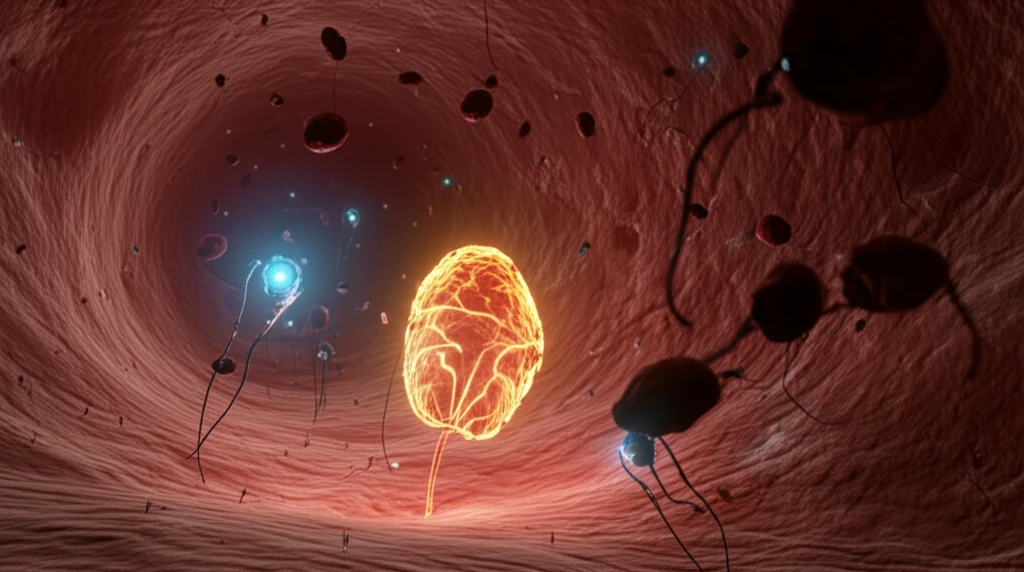
Early Detection of Prostate Cancer: A Breakthrough with Nano-Sized Sensors
"New research unveils a rapid, highly sensitive method using nanotechnology to detect sarcosine, an early biomarker for prostate cancer, offering hope for improved diagnostics."
Prostate cancer is the second most common cancer in men worldwide, often detected through PSA (prostate-specific antigen) tests. While PSA tests are a standard tool, they aren't foolproof, and can sometimes lead to unnecessary biopsies. That's why scientists are constantly searching for more reliable ways to detect prostate cancer early. Groundbreaking research introduces an innovative approach using nanotechnology to identify sarcosine, an amino acid that shows up in higher concentrations in the urine and blood of prostate cancer patients.
The new method focuses on creating super-sensitive sensors using superparamagnetic iron oxide nanoparticles (SPIONs). These tiny particles are engineered to detect even trace amounts of sarcosine, potentially providing an earlier and more accurate diagnosis. This article explores how these sensors work, their potential benefits, and what this breakthrough could mean for the future of prostate cancer detection.
Sarcosine, also known as N-methylglycine, is an amino acid naturally present in the body. It plays a key role in one-carbon metabolism. When sarcosine levels spike in blood plasma and urine, it can indicate certain diseases, notably prostate cancer. This link makes sarcosine a valuable biomarker, and detecting it accurately is crucial for early diagnosis. Conventional methods often lack the sensitivity needed to catch these subtle changes, which is where nanotechnology steps in.
How Do Nano-Sized Sensors Detect Prostate Cancer Earlier?

Researchers have developed special nanoparticles (NPs) to pinpoint sarcosine in urine samples. These nanoparticles are made of superparamagnetic iron oxide (SPIONs), combined with gold (Au), chitosan (CS), and sarcosine oxidase (SOX). SPIONs are like tiny magnets that can be manipulated easily, while gold enhances their sensing capabilities. Chitosan, a natural polymer, helps stabilize the nanoparticles, and sarcosine oxidase is an enzyme that specifically reacts with sarcosine.
- SPIONs/Au/NPs: Basic nanoparticles with a gold coating.
- SPIONs/Au/CS/NPs: Nanoparticles coated with chitosan for better stability and biocompatibility.
- SPIONs/Au/CS/SOX/NPs: The most advanced nanoparticles, incorporating sarcosine oxidase to specifically target and react with sarcosine.
The Future of Prostate Cancer Detection
This nanotechnology-based approach represents a significant step forward in prostate cancer diagnostics. By providing a more sensitive and reliable method for detecting sarcosine, it has the potential to improve early detection, reduce unnecessary biopsies, and ultimately save lives. The system’s suitability for low-cost miniaturization and point-of-care testing also opens new avenues for accessible and personalized medicine. Further studies and clinical trials will be essential to validate these findings and bring this innovative technology into widespread use, offering hope for better prostate cancer management in the future.
